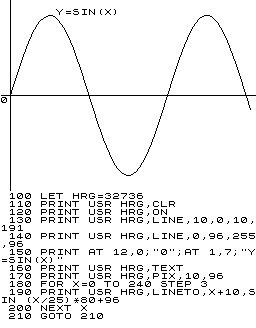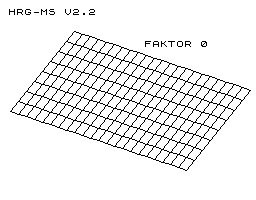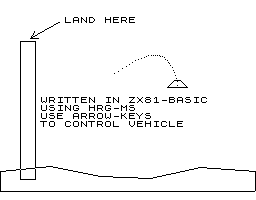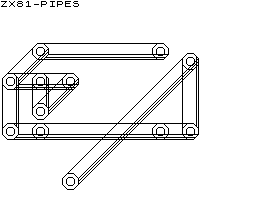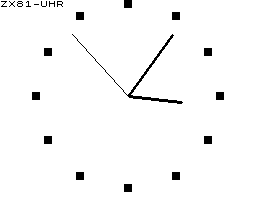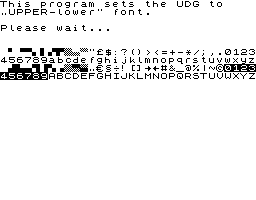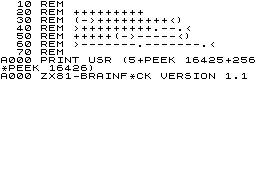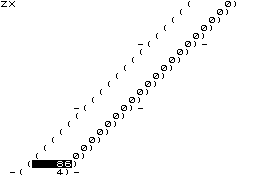|
All following programs are written in Sinclair ZX81 Basic using HRG-MS.
Here the most simple demo of all sinus.p. These few Basic lines are all you need to see the sinus-graph on your screen.
demo16.p or demo64.p generate some graphics on the screen and print each of it. While running the program you can try out to switch between the graphic bank(s) and text-screen or make a printer-copy of semi-finished graphics by hotkey. On the screen you will see each graphic beeing constructed line by line. If you have 64k of RAM and use demo64.p you get an animated view of the graphics on your display at the end.
This little program landhere.p is a kind of a lander. Its your task to land at the top of a bulding. In this program I demonstrate the use of polygons and xor-drawing
This demo pipes.p uses polygons to make a random drawing of transparent 3D-pipes.
Here we have a real working analog clock uhr.p with dial and hands. It automatcly detects a ZX81 (50Hz) or TS1000 (60Hz) and adjustst the timer. To make it run with the correct speed on an emulator you have to adjust the variable FPS (FramesPerSecond) in the program to match the picture frequency!
Here is an example program that uses UDGs (available in version 2.7). It includes a character set (font) with upper and lower letters. upperlowerfont.p generates the font and displays it on the screen. As you see in the picture it also sets up some extra chracters.
This is a ZX81 implementation of the language BRAINF*CK. This tiny computer language uses only 8 commands:
This version of brainf*ck.p is an interpreter written in assembler only. It uses 16-bit cells. With its powerful dump function (command "?") you get an overwiew of the 22 cells around the pointer. There is also a single-step trace-and-dump mode which is initiated with a "??" and ends with a "?". And btw. it uses self linking machine-code structures that makes it possible to run the machine-program in the last REM line while adding lines in front of it. There is also a short tutorial in English brainf*ck-en.pdf and German brainf*ck-ge.pdf.
back to the zx81 engine room |
